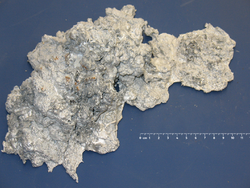This article has multiple issues. Please help improve it or discuss these issues on the talk page . (Learn how and when to remove these messages)
|

Aluminium dross, a byproduct of the aluminium smelting process, can be mechanically recycled to separate the residual aluminium metal from the aluminium oxide. [1] [2]